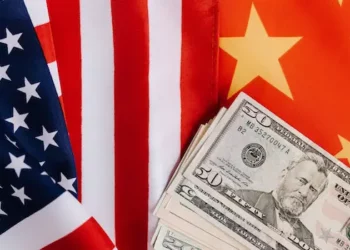Difference Between Articles 356 And 365?
The Indian Constitution includes various ways to ensure the proper functioning of the nation’s democratic system. Two of these provisions include Article 356 as well as Article 365. Both are used in cases of exceptional circumstances where the normal function of the government is affected. Article 356 permits the imposition of the President’s Rules in a state, and Article 365 allows for the declaration of the “failure of constitutional machinery.” These provisions are designed to preserve the authenticity of the system of democracy; they also are controversial and subject to criticism.
Below, we will examine the major distinctions in Articles 356 and 365, their constitutional provisions and limitations, the controversies, and the importance of the judiciary for the implementation.
Introduction To Articles 356 And 365
Concerning Constitutional issues Indian Constitution, Articles 356 and 365 are among the more debated and controversial provisions. Both provide the central government to exercise authority over states in specific instances. But these two articles have some distinct differences, and knowing the differences is essential to understand how the Constitution operates.
Article 356 under the Indian Constitution is also known as the President’s Rule. The President is empowered to enforce the central government’s authority on state governments and to suspend the State’s power and functions in the event of failures in the constitutional machinery in the State. Contrarily, Article 365 provides that “the failure of the constitutional machinery” in any state could be considered an infringement of constitutional rules.
Understanding The Purpose Of Article 356: President’s Rule
“The President’s Rule” is a clause within the Indian Constitution that allows the central government to take over the management of the State’s government when it is found to be a constitutional breach. This means that the central government oversees the affairs of the State by directing the Governor’s Office and without intervening in the State’s legislative power.
When An Article 356 Invoked?
The President’s Rule could be enforced if the State’s government does not perform its duties following the Constitution’s requirements. The main motives that could be the basis for the application of Article 356 include the inability of the local government in its efforts to adhere to the Constitution and the State’s inability to meet the needs of the State’s security and financial requirements as well as the requirements of the nation in general.
Procedural Procedure For Imposing President’s Rules
Applying the President’s Rule is to review the governor’s report about the State’s constitutional problems, which is then analyzed by the ministers’ council. Should the ministers’ council decide it is needed, the President will sign off, then the federal government takes over the State’s power and functions.
Understanding The Purpose Of Article 365: Failure Of Constitutional Machinery
What exactly Does It Mean By “Failure Of Constitutional Machinery”?
The phrase “failure of constitutional machinery” in Article 365 refers to a situation in which a state’s government does not comply with the Constitution’s provisions, which can lead to a constitutional crisis.
When An Article 365 Invoked?
Article 365 is invoked whenever the state government fails to adhere to the Constitution’s rules and causes a disruption within the constitutional machinery. So it is when a state’s government does not adhere to the Constitution’s rules or orders and, consequently, violates its rules.
Procedure To Impose Article 365
In contrast to Article 356, Article 365 does not define any procedures to invoke it. However, the central government can take the necessary steps to ensure conformity with India’s Constitution of India.
Constitutional Provisions And Limitations Of Articles 356 And 365
Article 356, part of Part XVIII of the Constitution, deals with emergency Provisions. The Constitution empowers the President to use the President’s Rule in particular circumstances that may threaten Constitutional values or principles.
Constitutional Provisions Of Article 365
Article 365 is in Part XI of the Constitution, which addresses center-state relations. The law empowers the State’s government to act in cases where there is a break in the State’s constitutional structure.
Limitations On The Use Of Articles 356 And 365
The Constitution’s drafters envisioned the usage in Articles 356 and 365 only as an option of last resort. So, there are many restrictions on their application. One of the biggest restrictions is the judiciary’s power to examine and deny any presidential proclamation following Article 356. In addition, the central government cannot apply these laws to justify its political or ideological views. But, there are also clear, rational, and compelling arguments for imposing the President’s Rule. The application is not arbitrary or arbitrary.
Important Differences Between Article 356 And Article 365.
Differences In Purpose
Articles 356 and 356 of the Indian Constitution administer the President’s rule in the states. But the objectives of the two provisions differ. Article 356 allows the President to enforce the rule of the President in the State when he/she, or anyone else, on behalf of the President, is convinced that there has been a situation in which the administration of the State is not performed following the Constitution’s provisions. However, Article 365 deals with the State’s inability to abide by the instructions issued by the Union Government or other required instructions.
Differences In Constitutional Provisions
While Article 356 is part of part XVIII of the Indian Constitution, which deals with Emergency provisions. Article 365 is under Part XI, which is concerned with the relations between the State and the Centre. Article 356 is the most frequently utilized in the past and was invoked nearly 100 times over the years; however, Article 365 was only invoked twice two times, one time at the time of Punjab in 1951 and another time in Kerala in 1959.
Differences In Procedure
The process for using Article 356 is to issue a suggestion by the State’s governor to President India, who issues a proclamation that assumes authority over the State. However, under Article 365, the Union Government may obligate a state to comply. When the State is not in compliance with the directions, the President can intervene and decide that the administration of the State is not executed under the Constitution.
Controversies And Criticisms Surrounding Articles 356 And 365

Controversies And Criticisms Of Article 356
Article 356 has been the subject of debate and criticism because it frequently uses the federal government to dismantle states’ governments from different political parties. Many claim this law violates the principle of federalism and states’ sovereignty. The Supreme Court has laid down guidelines to stop the arbitrary application permitted by Article 356 during the S. R. Bommai vs. Union of India case of 1994.
Controversies And Criticisms Of Article 365
Article 365 is not utilized often, but it has been criticized for giving excessive power to the Centre and weakening states’ power. The power to enforce the rule of the President following Article 365 has been considered an attack on the structure of the federal Constitution of the Indian Constitution.
Role Of The Judiciary In The Implementation Of Articles 356 And 365
The Function Of The Supreme Court In Implementing Articles 356 And 365.
The Supreme Court has played an important part when it comes to the interpretation as well as application of Articles 356 and. For example, in the crucial S. R. Bommai vs. Union of India case, the Supreme Court established guidelines to avoid abuse and abuse of Article 356. The court also decided that the judiciary could re-examine the President’s declaration, and courts may invalidate it if they find it to violate the Constitution.
The Role Of The High Courts In Implementing Articles 356 And 365.
The High Courts have a significant role to play in the application of Articles 356 and 360. Anyone unhappy with the government’s choice to enforce President’s rule may approach the High Court for a remedy. This High Court can also review the President’s decision and block it if it violates the requirements of the Constitution.
In conclusion, it is vital to be aware of the differences between Article 356 and Article 365, their constitutional provisions, and the limitations of their application. While these rules are designed to ensure the proper functioning of India’s democratic system, their implementation has frequently been complex and controversial. The judiciary’s function in implementing these provisions is vital, and the judicial oversight of their implementation has been crucial in ensuring the integrity of the system of democracy.
FAQ’s
What are Articles 356 and 365 of the Indian Constitution?
Articles 356 and 365 are two provisions of the Indian Constitution that deal with the imposition of President’s Rule or the suspension of state assemblies in case of a breakdown of the constitutional machinery in a state.
What is Article 356?
Article 356 of the Indian Constitution empowers the President of India to impose President’s Rule in a state if the constitutional machinery of that state fails or if the state government is unable to function in accordance with the Constitution.
What is the procedure for imposing President’s Rule under Article 356?
The imposition of President’s Rule under Article 356 requires the approval of the Union Cabinet, and the President must be satisfied that there is a breakdown of the constitutional machinery in the state.
What is Article 365?
Article 365 of the Indian Constitution makes it mandatory for the states to comply with the laws made by the Parliament of India. It states that if a state fails to comply with or implement a law made by the Parliament, the President may issue a proclamation directing the state to comply with such a law.
Is there any relationship between Articles 356 and 365?
Although both Articles 356 and 365 deal with the powers of the President, they are distinct and separate provisions. Article 356 deals with the imposition of President’s Rule in case of a breakdown of constitutional machinery in a state, while Article 365 deals with the mandatory compliance of the states with the laws made by the Parliament.
How are Articles 356 and 365 relevant in contemporary times?
Articles 356 and 365 have been used in the past to deal with situations of political instability or constitutional crises in some states of India. However, their use has been controversial and has been criticized by some as an infringement on the federal structure of the Indian Constitution. Nonetheless, these provisions remain important tools for the central government to deal with any emergencies or constitutional challenges that may arise in the states.



















